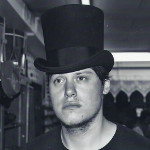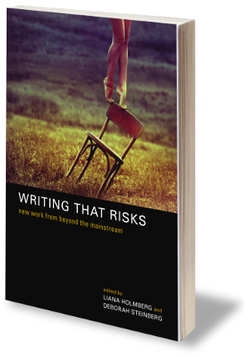Two Flash Fictions by David Crohn
Two Flash Fictions
David Crohn
Is There a Bird
The man in the Tower, whose ornithology is often intact, will notify you, via paper slip through plastic tubeway, of the incident. If the sparrow or pigeon is in a kitchen, look for the problem ointment administered through wall pores, the scent of which will frighten the pigeon or sparrow back to its tower nest. If the room is a dream (mind fever), render warm foal syrup from hoof, caparison, or another available element of equinophobia. Administer syrup via ear canal and wait 90 days. The bird will die and other birds will come to collect the remains and return them to the tower.
In some rare cases the pigeon/sparrow will be caught in a web of rooms, the space beyond the room, a spaceless room, or in an occluded (god) room. This is called Interstitial Abstraction and should be treated with utmost care and urgency by an Other in bird-retardant tragedy garments. Vacate the home and notify the oracular authorities (via tubeway, c/o the Tower, etc.), who will, upon certified request, re-anoint access at the proper juncture. The pigeon/sparrow will be returned to the ointment fiend, the house secure for the family abstraction to resume, whether in decayed voices or lull or in a capsule of mush, however dispensed by the originary swirl of blood and tissue and cloth.
Da Vinci in the Tower
We have him in the high tower, the artist. We turned him over in the surrounding wood, his horse dead of thirst and him half-dead samewise.
We watered him, horsed him, and carried him to the acropolis, limp and muttering in a strange partial Latin, a glossolalia none of us could figure and none of us cared to.
We bedded him for the night. In a few days he reinvigorated, came to his senses, though with the half-Latin still in his mouth. That with which he imprecated while we urged him, a spear at his back, up the stairs and into the high tower.
The chamber, 20 by 20 paces, with a bed and table and a single casement high enough for ample light but too narrow to jump through. We opened the door once daily and pushed a tray in with a water pitcher and a bowl of spoonmeat.
He howled day and night in his false tongue. We brought in a pedant, an interpreter of tongues. He said the artist was calling for his horse at night and by day, paper and pen.
We led the pedant to the edge of the fosse and pushed him in. He was skewered at a dozen places. His limbs quavered and then stopped.
We waited for the birds to finish with him, then went to the chamber of the high tower and slid a box across the threshold. The artist rose from his bed and opened the box and emptied the contents onto the table. A sheaf of paper, a pen, an ink cartridge. He made a grateful sound, and we told him his horse was dead. The howling stopped.
The next day we recovered a drawing of a bird from one of the stairs leading up to the high tower, which we burned. We gave him no water or spoonmeat that day.
Another drawing appeared on the staircase, a shapeling with its eyes to its knees inside a pod or case that had been split and spread. We handed it to the liturge, who cursed and spat and ordered us to burn it, which we did.
Again we bereft the artist of food and water.
Day after day new reproductions appeared. Some bore half-open skulls, or contraptions of pipes, pulleys, and disks, beams stretching cloth, oblongs winged insect-like, frizzed matriarchs facing askance and bearded men addled or sullen. There were self-portraits.
We offered food again, but the artist ate nothing. He grew lousy, thin, and pale, shaking insects from his hair and beard, swatting them away only when they crossed his papers. He slipped further drawings under the door. They scattered across the floor and littered the stairs. We turned one over, found lice gnawing at the corners.
Today amidst the sheets there was the likeness of a pariah, his skin stripped away and his palms open in supplication. He stood on a promontory, his village behind him in the distance. The liturge regarded the drawing, the exposed tendons and nethers, and went to him demanding penitence without shrift. The artist said nothing. The liturge made to break his larynx but we pulled him off. He threw himself from the widow’s walk, was skewered beside the pedant.
The artist choked and then glazed a smile. He picked up his pen and resumed. He has one sheet left. We will look for it on the staircase, ink-lined like the others, so we can burn it and drop him into the fosse. Then we will ride into the surrounding wood and torch the trees and brush, enflame and erase as much as can be. We will salt the ashes.
© David Crohn
=====
 David Crohn is an MFA student and history teacher at the City College of New York. His work can be found in DownAndOutMag.com, Apocrypha and Abstractions, and elsewhere. He blogs at partiallyexaminedlife.com, rarely tweets as @pitchforkhuh, and occasionally works on his novel. His outlook tends toward a moderate to high faith in visible signs of the invisible order.
David Crohn is an MFA student and history teacher at the City College of New York. His work can be found in DownAndOutMag.com, Apocrypha and Abstractions, and elsewhere. He blogs at partiallyexaminedlife.com, rarely tweets as @pitchforkhuh, and occasionally works on his novel. His outlook tends toward a moderate to high faith in visible signs of the invisible order.
Join our community
Get the book
